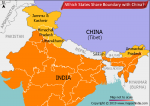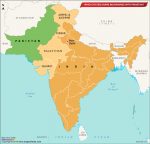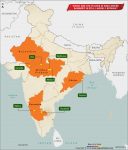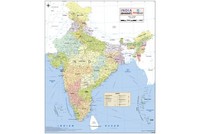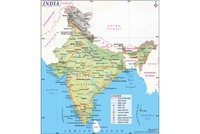One of the greatest batsmen of the modern era, Rahul Dravid was born on January 11, 1973 in Indore in a Maharashtrian family. Together with Sachin Tendulkar and Sourav Ganguly, Dravid was the top-rated Indian Test batsman in the latter half of the 1990s and first decade of the new century.
He grew up in Bangalore and studied at St. Joseph’s Boys High School and St. Joseph’s College of Commerce. He took to cricket when he was 12, representing Karnataka at various junior levels. He made his Ranji Trophy debut in 1991, scoring 82 against Maharashtra. His teammates included Anil Kumble and Javagal Srinath; both would play alongside Dravid in the national squad later.
Describing the importance of cricket in his life, in an interview to Outlook magazine in 2012, Dravid said: “[Playing cricket forIndia] was my earliest, and for long, my only dream. My earliest memories are tied up with cricket. Bat and ball in the backyard, begging anyone who would to bowl to me, I had posters of cricketers in my room, I watched league matches, Ranji matches—as much cricket as I could. In later years, this passion became my profession—I was lucky.”
In the 1991-92 season he scored two hundreds, finishing at an impressive average of 63.3, and got chosen for the Duleep Trophy’s South Zone cricket team. He made his One Day International debut on April 3, 1996 against Sri Lanka in the Singer Cup in Singapore. He scored only three runs and followed it with 4 in his next One Day outing.
However, he impressed in his Test debut at Lord’s on 20 June 1996 against England in the second match of the series. Replacing Sanjay Manjrekar who had hurt his ankle and batting at number 7, Dravid scored a patient 95 runs. He was retained for the second Test as well and responded well, scoring 84 runs in the first innings.
Soon he became the third highest run-getter for the home side in a three match Test series against South Africa. When India toured South Africa he scored his first Test century in the third Test at the Wanderers, a brilliant 148 in the first innings, and followed it with 81 in the second. At 277 runs he was as the highest run-getter forIndia in the series.
In the Test series against the West Indies Dravid was again the highest scorer for India, amassing 360 runs at a superb average of 72.
Though India were unable to qualify for the semi-finals of the 1999 World Cup, Dravid was in great form and his 461 runs in 8 games made him the top run-getter in the tournament. Any questions of his being unsuited for the shorter version of the game were banished.
Meanwhile, his reputation in Test cricket continued to grow. In a remarkable batting display a 376-run fifth wicket partnership between Dravid and VVS Laxman at Eden Gardens, Kolkata in 2001 helped India to a famous win against Australia in the second Test. Dravid was in top form for most of 2002. His exploits in the middle included a 144 against the West Indies in Georgetown, four consecutive centuries (three against England) and a man of the series award for scoring 602 runs in the four Test England series.
In the 2003–2004 season he scored a double ton each against Australia, Pakistan and New Zealand. Dravid and Laxman again came together spectacularly in the first innings to score 303 for the fifth wicket in India’s second Test against Australia.
Dravid ended the series with an astonishing average of 103.16.
Towards the end of his career Dravid in one of his greatest performances scored 461 runs in a four-match Test series in England in 2011, averaging 76.83, an effort that was particularly heroic considering India lost the series 0-4.
Dravid, who announced his retirement from Test cricket on March 9, 2012, ended his career with figures of 13,288 runs in 164 matches at an average of 52.21 with 36 centuries and 63 half-tons (his One Day record stands at 10,889 runs in 344 matches with 12 hundreds and 83 fifties at an average of just under 40).
While making the announcement the great batsman said: “[I] would like to thank the Indian cricket fan, both here and across the world. The game is lucky to have you and I have been lucky to play before you. To representIndia, and thus to represent you, has been a privilege and one which I have always taken seriously. My approach to cricket has been reasonably simple: it was about giving everything to the team, it was about playing with dignity and it was about upholding the spirit of the game. I hope I have done some of that. I have failed at times, but I have never stopped trying. It is why I leave with sadness but also with pride.”
Know as the perfect ambassador for cricket both for his on- and off-field conduct, Dravid had many admirers in the cricketing world. In a tribute the formerEnglandcricketer Ed Smith wrote on espncricinfo.com: “No longer will he [Dravid] take guard with that familiar hint of politeness, even deference. No longer will he raise his bat to the crowd as if he is genuinely thanking them for their applause — the bat tilted outwards in acknowledgement of the supporters, not just waved frantically in an orgy of personal celebration. No longer will he stand at first slip, concise and precise in his movements — a cricketer first, an athlete second. No longer will the high Dravid back-swing and meticulous footwork link this generation with the great technicians of the past.”
Also on this day:
1966 — Lal Bahadur Shastri, second Prime Minister of India, passed away

